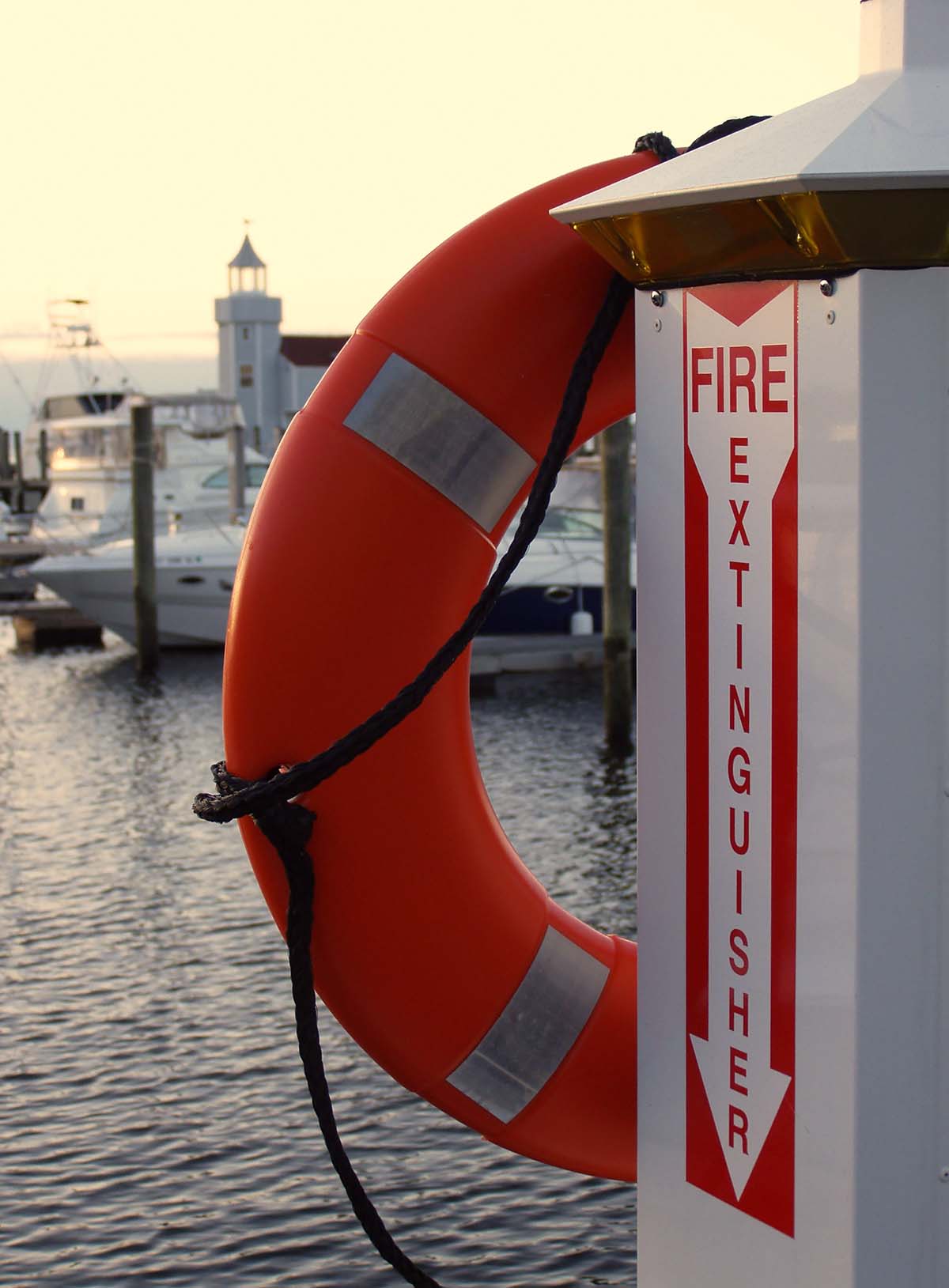
Fire and Blood: How Marina Owners and Operators Can Avoid Two of the Biggest Fueling Hazards This Summer
Published on July 5, 2024The seemingly mundane task of fueling a boat is fraught with hidden risks and potential liability for marina owners and operators, especially when it comes to dangers from fire and bloodborne pathogens. As you navigate the peak of the summer busy season, you can go a long way toward ensuring the safety and health of your staff and patrons by minimizing fire risks and protecting them from bloodborne pathogens during the fueling process. What practical insights and actionable steps can you take at the fuel station to maintain a safe environment during your busiest time of the year?
Fire Standards
The National Fire Protection Association (NFPA) has set a series of consensus standards for fire prevention in marina and boatyard facilities that you should use as your guide. They provide guidance for best fire prevention practices not only during marine fueling but also for other areas of the marina, including dry-stack buildings, service areas and storage.
Some states have adopted these standards as part of their fire code, while others have adopted similar consensus standards. Work with your safety counsel to determine the correct standards governing your marina.
Best Fire Prevention Strategies
There are some specific steps marinas should consider taking when it comes to fire safety.
Multiple regulatory standards – for example, from OSHA to the NFPA – dictate the proper use, size and location of fire extinguishers. NFPA regulations say that the maximum travel distance to an extinguisher should be 75 feet. The NFPA also says that you must have an 80B:C-type fire extinguisher within 100 feet of a fuel pump.
It is also helpful to have fire carts or fire pumps when responding to fuel fires. The NFPA also states marinas should implement safe fueling practices – which include specific signage, spill containment measures and emergency fuel shut-off procedures.
Finally, only properly trained employees should try to respond to a fire emergency, so make sure you have identified such personnel and communicated these rules to all your workers.
Importance of Bloodborne Rules
Federal workplace safety officials have identified “bloodborne pathogens” to include microorganisms present in all sorts of bodily fluids, such as blood, urine, vomit or feces – all of which can cause disease in humans. The most common types of illnesses stemming from contact with these fluids include Hepatitis B (HBV), Hepatitis C (HCV), Human Immunodeficiency Virus (HIV), MRSA or other forms of Staphylococcus infections.
In a marina, a common cause of exposure to bloodborne pathogens comes during the pumpout process. Since the septic (black) tank on a vessel may be pressurized, it may expel waste when opened. Likewise, the pumpout hose may not be properly attached to the vessel, which could cause employees to be sprayed with waste. Another area of exposure could arise when staff members clean restrooms and encounter bloodborne pathogens.
Creating Bloodborne Pathogen Safety
Require employees conducting pumpout procedures to wear disposable gloves and eye protection.
Require employees to wash their hands with antibacterial soap and warm water or use hand sanitizer after a pumpout is completed.
Provide employees with supplies and easy access for cleaning pumpout attachments and hoses. Fittings should be placed in a bucket filled with a water/bleach solution. The solution should be pumped through the hose.
Consider requiring employees to bring an extra change of clothes in case of exposure to bloodborne pathogens or other materials.
Assess the premises to determine if workers should wear personal protective equipment (PPE) in other areas. For example, leather gloves can help avoid sharp objects that may be discarded in a trash can or elsewhere on the premises. Install a “sharps” disposal unit in each restroom and hire a third-party service to handle disposal.
What if an Employee is Exposed?
In the event an employee is exposed to bloodborne pathogens, you should take several specific actions.
First, it is imperative to document the circumstances of the exposure and the source, where possible.
Offer a post-exposure medical evaluation by a healthcare professional. With employee permission, this evaluation may include testing the exposed employee’s blood.
Make the Hepatitis B vaccine available. If an employee declines the vaccine, document the offer and their decline. Marina owners and operators are responsible for any post-exposure medical cost.
Conclusion
By implementing these safety measures, marina owners can help protect the health and well-being of employees and patrons at the fuel station, ensuring a safer and more comfortable environment for everyone involved.
Robert Smith is a certified safety professional (CSP) and safety consultant in Fisher Phillips’ national Workplace Safety practice group. He can be reached at rsmith@fisherphillips.com.
Brett Owens is a partner in the Tampa office of Fisher Phillips. He can be reached at bowens@fisherphillips.com.
| Categories | |
| Tags |





